6 July
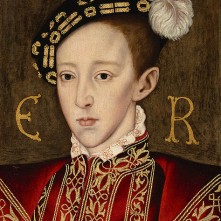
Edward VI
1537 – Execution of Sir Robert Constable at Beverley's Gate in Hull. Constable had been an active participant in the Pilgrimage of Grace Rebellion in 1536, but had received a royal pardon and had gone on to try and suppress Bigod's Revolt in 1537. However, he was summoned to London in 1537, and subsequently tried and condemned to death. He was hanged in chains.
1553 - King Edward VI died at Greenwich Palace.
1560 – Signing of Treaty of Edinburgh (Treaty of Leith) between representatives of Elizabeth I and Francis II of France, husband of Mary, Queen of Scots. The terms were that French and English troops were to withdraw from Scotland and that Francis and Mary should stop using the title and arms of the monarch of England and Ireland, which belonged to Elizabeth I.
1570 – Death of Margaret Clement (née Giggs), wife of John Clement and adopted daughter of Sir Thomas More, in Mechelen where she and her husband had gone into exile. Margaret was buried in the Cathedral of St Rumbald. Trivia: In 1537, Margaret bribed the gaoler at Newgate Prison to let her feed the Carthusian priests who were starving there.
1583 – Death of Edmund Grindal, Elizabeth I's Archbishop of York and of Canterbury, at Croydon.
1585 – Executions of Thomas Alfield, Catholic priest, and Thomas Webley, a dyer, at Tyburn. They had been tried and condemned under statute 23 Eliz. c.2 s.2, which made the publication of any book attacking the queen a felony punishable by death. The book in question was Dr William Allen's book, “Modest Defence of the English Catholiques”, which Alfield and Webley had helped to distribute.
1614 – Death of Sir Anthony Cope, 1st Baronet, politician and Puritan. He was buried at Hanwell, Oxfordshire.
1618 – Death of John Davies of Hereford, poet and writing master. He was buried in the church of St Dunstan-in-the-West, London. His works included “The Scourge of Folly”, “Writing Schoolmaster”, or, “The Anatomy of Fair Writing” and “Mirum in modum: a Glimpse of Gods Glorie and the Soules Shape”.
7 July
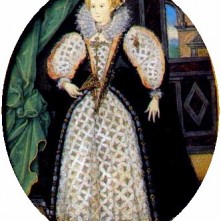
Penelope, Lady Rich, by Hilliard
1540 – Anthony St Leger was appointed Lord Deputy of Ireland.
1545 – Death of William Crane, merchant, musician and Master of the Choristers of the Chapel Royal. He was buried in St Helen's Church, Bishopsgate, before the high altar.
1548 – Treaty of Haddington between France and Scotland. By the terms of this treaty, the Scots and French agreed to the marriage of Mary, Queen of Scots, and Francis, the Dauphin.
1553 – Goldsmith Robert Reyns informed Mary (future Mary I) of Edward VI's death. Mary was staying with Lady Burgh at Euston Hall, near Thetford, and Reyns had rushed from London to give her the news.
1556 (or 8th July) – Executions of Henry Peckham and John Danyell, conspirators. They were hanged, drawn and quartered after being found guilty of treason for their involvement in the Dudley Conspiracy.
1568 – Death of William Turner, naturalist, herbalist, ornithologist, reformer, physician and the man referred to as “the father of English botany and of ornithology”. He died at his home in Crutched Friars, London, and was buried in St Olave's Church, Hart Street.
1585 – Birth of Thomas Howard, 14th Earl of Arundel, 4th Earl of Surrey, and 1st Earl of Norfolk, politician and art collector, at Finchingfield, Essex. He was the only son of Philip Howard, 13th Earl of Arundel, and his wife, Anne Dacre.
1607 – Death of Penelope Rich (née Devereux), Lady Rich, at Westminster. Penelope was the sister of Robert Devereux, 2nd Earl of Essex, and is thought to have inspired poet Philip Sidney's “Astrophel and Stella”. She married Robert Rich, Lord Rich, in 1581, but was having a love affair with Charles Blount, Baron Mountjoy, by 1595. Penelope married Blount, who was now Earl of Devonshire, in a private ceremony in 1605 after her divorce. The marriage led to the couple's banishment from court. Devonshire died in 1606.
8 July
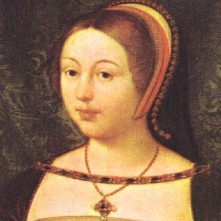
Margaret Tudor
1536 – Death of William Wyggeston, merchant and benefactor, at Leicester. He was buried in the collegiate church of St Mary in the Newarke, Leicester, which was destroyed around 1548.
1540 – Abolition, by Henry VIII, of all heretical books and those containing errors.
1549 – The beginning of Kett's Rebellion. Robert Kett, a Norfolk farmer, agreed to lead a group of protesters who were angry with the enclosure of common land. The protesters marched on Norwich, and by the time they reached the city walls, it is said that they numbered around 16,000.
1553 - Mary Tudor, daughter of Henry VIII and sister of the late King Edward VI declared herself queen at Kenninghall in Norfolk.
9 July
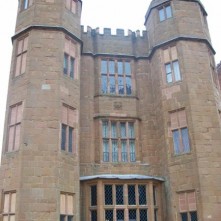
Kenilworth Castle
1540 - It was declared that the marriage of King Henry VIII and Anne of Cleves was null and void, and that both parties were free to marry again. The couple had only been married six months.
1553 – Nicholas Ridley, Bishop of London, preached at St Paul’s Cross denouncing Henry VIII’s daughters, Mary and Elizabeth, as bastards. The congregation were “sore annoyed with his words”.
1553 – The Duke of Northumberland officially informed Lady Jane Grey of Edward VI’s death in front of the Council and nobles, going on to explain the terms of Edward’s will which named Lady Jane Grey as the heir to the throne. Lady Jane Grey accepted that she was Queen.
1553 – Mary (future Mary I) wrote to the Privy Council stating her claim to the throne and demanding their allegiance.
While Mary was writing this letter, John Dudley, Duke of Northumberland, was informing his daughter-in-law, Lady Jane Grey, of Edward VI's death and informing her that the King had nominated her as his successor. Jane collapsed weeping and declared "The crown is not my right and pleases me not. The Lady Mary is the rightful heir." Northumberland and Jane's parents then explained Edward's wishes to the distressed Jane, and she accepted the crown as her duty.
1575 (9th-27th) – Elizabeth I was entertained at Kenilworth Castle by Robert Dudley, Earl of Leicester. It was a special visit in that it lasted nineteen days and was the longest stay at a courtier’s house in any of her royal progresses. We know a substantial amount about Elizabeth’s visit to Kenilworth because it was recorded in a letter by Robert Langham, a member of Dudley’s household, and in an account by poet and actor George Gascoigne, a man hired by Robert Dudley to provide entertainment during the royal visit.
1586 – Death of Edward Sutton, 4th Baron Dudley, soldier and landowner, at Westminster. He was buried in St Margaret's, Westminster. Sutton served as a soldier in Henry VIII's reign in Ireland and Boulogne, and in Edward VI's reign against the Scots. He was made a Knight of the Bath at Mary I's coronation, and then given Lordship of Dudley Castle, where he entertained Elizabeth I in 1575.
10 July
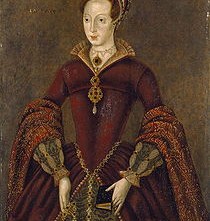
Lady Jane Grey
1553 - A letter arrived from Mary, daughter of Henry VIII, informing the council that she was the rightful heir to the throne, not Lady Jane Grey, and demanding their support.
1559 – Death of Henry II of France. He had been injured in a joust on 30th June when he was hit in the face by a lance. It is thought that a splinter entered his eye and went into his brain. He was buried in the Saint Denis Basilica.
1559 – Accession of Francis II and Mary, Queen of Scots as King and Queen of France.
1584 – Assassination of William of Orange, also known as William the Silent or William I, Prince of Orange. He was shot in the chest at his home in Delft by Balthasar Gérard, a Catholic Frenchman. A reward of 25,000 crowns had been offered by Philip II of Spain for the assassination of William, who was the main leader of the Dutch Protestant revolt against Spanish forces in the Netherlands. William was buried in the New Church in Delft. Gérard was captured and was tortured for days before being executed on 14th July 1584.
1584 – Execution of Francis Throckmorton, Catholic conspirator, at Tyburn for high treason after he was found guilty of conspiring to remove Elizabeth I from the throne and to replace her with Mary, Queen of Scots. It appears that Throckmorton was acting as an intermediary between Mary, Queen of Scots and Mendoza, the Spanish ambassador.
1588 – Death of Edwin Sandys, Archbishop of York. He was buried in Southwell Minster.
11 July
1533 – Pope Clement VII ordered Henry VIII to abandon Anne Boleyn and drew up a papal bull excommunicating Henry VIII. He held off issuing it in the hope that Henry would abandon Anne, and in the end the bull was not issued until 1538.
1536 – Death of Desiderius Erasmus, the famous Humanist scholar, from dysentery at Basel during the night of the 11th/12th July. He was buried in the cathedral at Basel on 18th July. His works included Novum Instrumentum omne (a Latin translation of the epistles and gospel), “The Praise of Folly,” “De Copia”, “Adagia” and “The Education of a Christian Prince”.
1558 – Baptism of Robert Greene, writer and playwright, at St George's Church, Tombland, Norwich. His works included the plays “The Scottish History of James IV” and “Friar Bacon and Friar Bungay”, and the romance “Mamillia”.
1564 – The plague hit Stratford-upon-Avon in Warwickshire. The epidemic lasted six months and killed over 200 people, around a fifth of the population. William Shakespeare was born in April of that year, and his family were fortunate in escaping the plague.
12 July
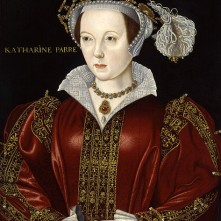
Catherine Parr
1543 - King Henry VIII married his sixth and final wife, Catherine Parr, in the Queen’s Closet at Hampton Court Palace.
1548 – Death of Stephen Borough, navigator and naval administrator, at Chatham in Kent. He was buried in St Mary's Church, Chatham. His memorial brass paid tribute to his career:
“He in his lifetime discovered Moscovia, by the northern sea pasage to St Nicholas, in the yere 1553. At his setting forth of England he was accompanied in his ship by Sir Hugh Willoughbie, being Admirell of the fleete, who, with all the company of the said two shippes, were frozen to death in Lappia the same winter. After his discoverie of Roosia and the costes adjoyning to wit Lappia, Nova Zembla, and the c***ry of Samoyeda etc: he frequented the trade to St Nicholas yearlie, as chief pilot for the voyages, until he was chosen one of the four principal Masters in ordinarie of the Queen's Majesties royall Navy, where in he continued in charge of sundrie sea services till time of his death.”
1549 – The rebels of Kett's Rebellion set up camp on Mousehold Heath, overlooking Norwich.
1555 – Burnings of preachers John Bland and John Frankesh, rector Nicholas Sheterden and vicar Humphrey Middleton at Canterbury. They were all Protestants burned for heresy.
1581 – Death of Maurice Chauncy, martyrologist, Carthusian monk and prior of Sheen Anglorum Charterhouse at Nieuwpoort in Flanders. He died in the Paris Charterhouse on his way back to Flanders from Spain, where he had been trying to get funding for the Charterhouse.
1598 – Execution of John Jones, Franciscan friar, at St Thomas's Waterings, Southwark. He was hanged, drawn and quartered for being a Catholic priest.

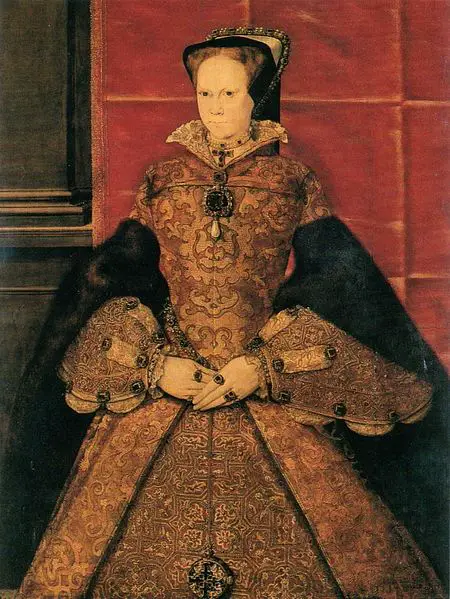
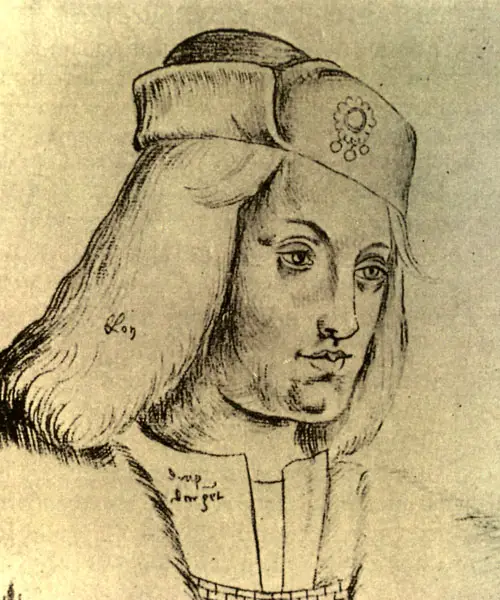
Leave a Reply